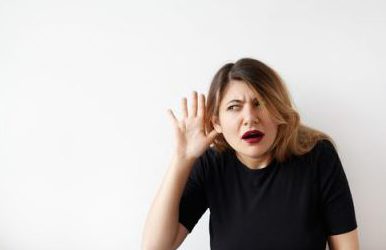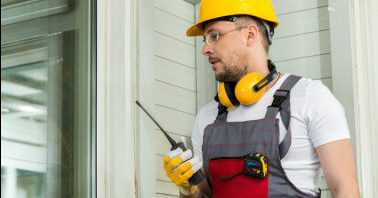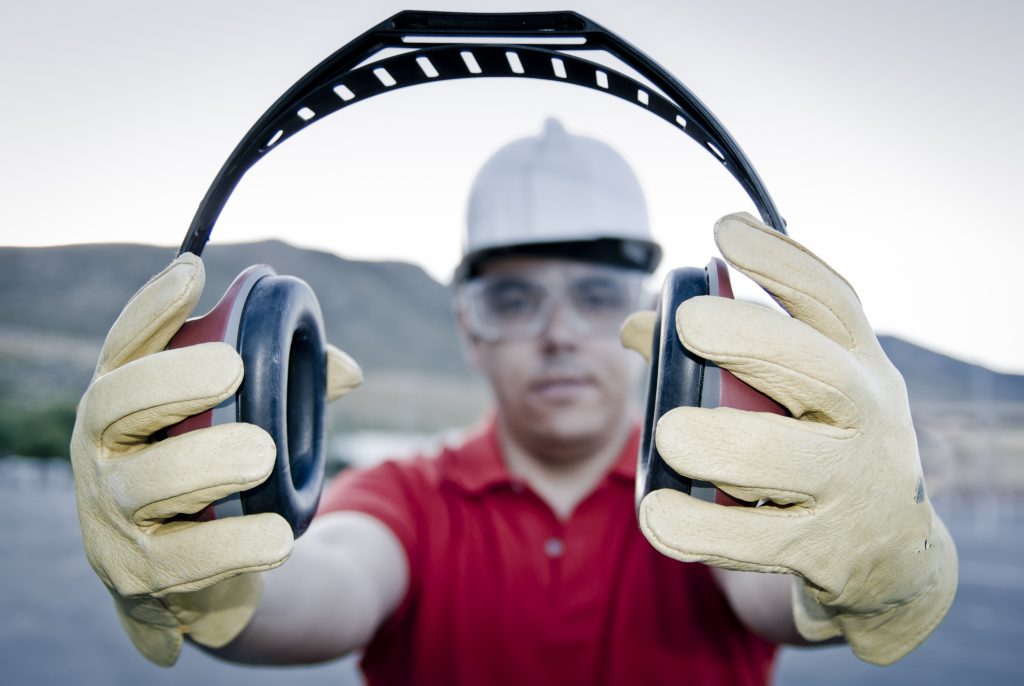We live in a world that is full of sounds: from ourselves, from nature, and from the mechanical world around us. Of course, many of these sounds are harmless. However, in the working world, some sounds around us can be too loud and become harmful. As much of the damage is irreversible, we must safeguard ourselves against this risk by using the right hearing protection.
Types of Hearing Loss
- Sensorineural Hearing Loss: this is the most common type and is caused by damage to the sensory hair cells or neural structures in the inner ear. Sound waves activate these tiny hairs to vibrate and release chemical messengers that stimulate the auditory nerve.
Although there are several possible causes, one of the most common is exposure to loud noise.

- Conductive Hearing Loss: Caused by a physical blocking of sound conduction in the ear. This can be something like a wax buildup or a foreign object lodged in the ear. Treatment can often completely, if not partially, cure this type of hearing loss.
- Mixed Hearing Loss: As the name suggests, this type is a mixture of sensorineural and conductive hearing loss.
Hearing loss can cause not only the ability to hear but sometimes sounds can even be distorted. At times people can also suffer from tinnitus, which is a ringing sound in your head and ears. Tinnitus can be only temporary and subside over time, but it can also remain for people’s entire lives!
Noise-Induced Hearing Loss: PREVENTABLE BUT IRREVERSIBLE
Also known as NIHL, this is a form of sensorineural hearing loss that is caused by exposure to loud sounds. It is the most easily prevented but the hardest to cure.
Once the little hairs in your ear have been damaged there is no way to get them back, so unfortunately once you experience a slight loss of hearing it is too late.
Sounds at or over 85 decibels (Dbs) can cause irreparable damage after exposure. Depending on the decibel level of the sound, it takes different amounts of exposure time before the damage is caused. For example, it would take approximately 8 hours worth of exposure for a lawn mover to cause hearing damage, but you could get hearing loss from less than 5 minutes of listening to speakers at full volume!
Often it is a gradual process and so it easily goes unnoticed. Therefore although it is fairly common among the population, a very small amount of those affected actually get treatment. Hearing loss is something usually associated with age but in fact, the sounds that can cause NIHL are more common than you might think.
Did you know?

- 5 in 10 young people listen to their music or audio too loudly. MP3 Player at full volume is around 105 decibels, and remember: sounds at or above 85 decibels can cause damage after too much exposure.
- About 18% of adults aged 20-69 have one form of hearing loss in both ears from among those who report 5 or more years of exposure to very loud noise at work. This is much greater than the 5.5% of those who report no occupational noise exposure.
- Only 16% of adults aged 20-69 who could benefit from using hearing aids, have ever used them. This is because the risks are not known and loss of hearing is accepted as a due course rather than addressed.
PROTECT YOURSELF
So now you know the risks and potential damages it is important to safeguard one of your most important senses from possible danger. Those of you who work in a noisy environment, especially those who are surrounded by sounds over 85 decibels, must consider hearing protection.
Industries particularly at risk:
- Construction
- Factory
- Aviation
- Entertainment/Event Staff
- Landscaping
At onedirect.co.uk we offer a wide range of ear defenders to suit you and your company’s needs.
Take a look at our Buying Guide and article on ‘Which hearing protection should I purchase?‘ for advice and our recommendations.
If not call our team of experts for advice, on 0333 123 3050 and shop our full range at www.onedirect.co.uk
